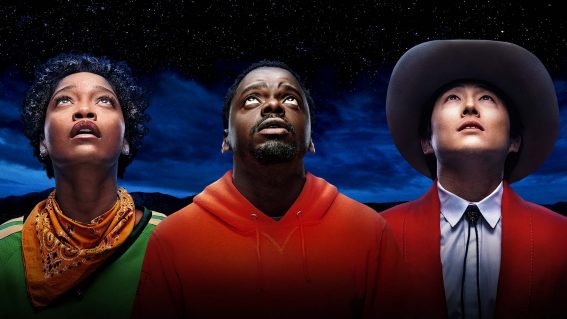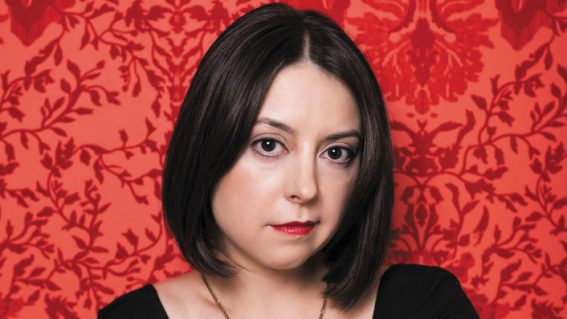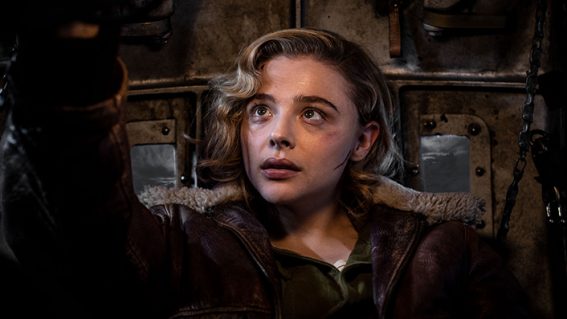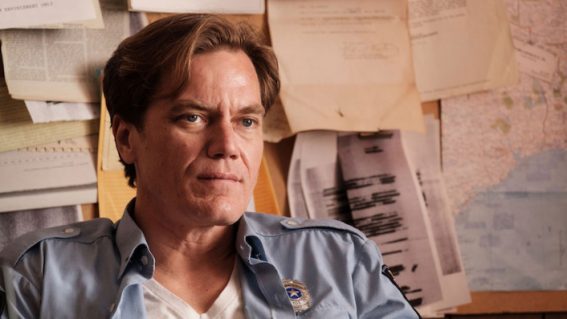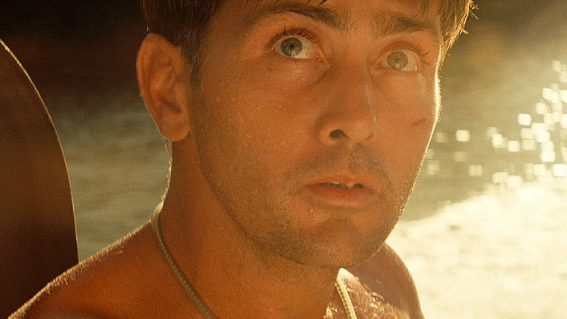The Room’s Greg Sestero on coming to NZ with Best F(r)iends: Vol 2
The star of cult hit The Room returns to NZ with another Tommy Wiseau performance.

After introducing audiences to Best F(r)iends: Volume 1 earlier this year, writer and lead actor Greg Sestero returns to Aotearoa with Best F(r)iends: Volume 2.
Concluding Sestero’s onscreen reunion with The Room‘s Tommy Wiseau, the film picks up on the cliffhanger ending of Vol. 1, as a mismatched pairing of mortician and drifter find their friendship (and unorthodox dental scrap-selling partnership) dissolved by mistrust and double-crossing.
Fans of cinema curio The Room—who’ve swelled in number since the bizarre true story of its production chronicled in The Disaster Artist—have relished seeing the duo share screen time together again, and now audiences in Auckland and Wellington will soon be able to see Sestero in person as he presents Vol. 2 and participates in Q&As on December 2nd (Auckland’s Hollywood Avondale) and 3rd (Wellington’s Roxy Cinema).
Flicks spoke to Sestero shortly before he headed to New Zealand with the film.
FLICKS: This is presenting the sequel to a film you’ve already showed here. What’s it been like going out and taking the follow-up around?
GREG SESTERO: I’ve had a blast doing it because Volume 2, to me, is the best part of it. I had the most fun making that film. It’s based in the desert. I like to say it’s like Tommy and Greg do Breaking Bad. And I think the audiences that have seen it have been really surprised that they’re two totally different films. This film, Vol. 2, comes alive in a different way, and I think it’s been a pleasant surprise. So it’s fun to tour with a film that you enjoyed making and that you also can watch because it’s one of the first movies I’ve ever done that I feel like I can watch—which is saying a lot—and I think it’s a really fun audience film, so I’m excited to bring it Down Under.
I guess this is equally applicable to the first film, but when it came to writing for Tommy, what benefits and what challenges were there writing for someone whose idiosyncrasies you knew so well?
I’ve always thought that he’s a really great character, and I think that comes across in The Room kind of in a more unintentional comedic way because I think he really wanted to be serious, and he wanted to be a banker, and he wanted to be looked upon as like a leading man, and people saw a lot of comedy in that, but at the same time, his presence, I think, is really strong, and I thought, “Why don’t you use that to his advantage and put him in a role where he just can be himself?” And those unique talents can play to his advantage and be something that could be taken seriously.
That was kind of the goal with Volume One and continuing with Vol. 2 as well. Between both films, I think it’s probably obviously the best work he’s done, but it’s also work that also brings people laughter, but also makes them feel things. So I really enjoyed making these films and working with Tommy this time around.

There’d obviously be a curiosity for other people to work with him who’d seen The Room, or even just been aware of it as a phenomenon, but when it came to actually putting a crew together, did it make it harder to get people that actually would go through the experience of doing a shoot with him after hearing what had happened with The Room?
I think people were excited. In the sense of shooting the film, they were excited. And then actors that worked on this movie, for the most part, hadn’t really seen The Room, and I thought that was a better fit because that way, you’re not trying to kind of match the comedy or the tone. You’re really trying to make something new. And so there was a couple of people, actresses that didn’t want to work on it because of The Room, but, for the most part, they were excited to work on this film even not knowing The Room, so that was cool.
How do you feel taking the second film to audiences in comparison to what people may have been expecting as fans of The Room who had seen that dozens and dozens of times?
Yeah, I mean, that’s one of the things that’s risky is that people are so comfortable with The Room now that they’re going to probably come in and expect that, and so I think the first film was able to bring people out in a different direction. I think it was a different tone and a different vibe, and I think, for the most part, people got it. Obviously, it ends on a cliffhanger. But with part two, I think they’re getting more of a film and I think things that all kind of tie together, and I think that the pacing is faster.
So I think, for the most part, people that have seen both movies, they really see it as a worthy successor to the madness that is The Room. In fact, a reviewer was saying that it beats The Room in the sense of sheer madness [laughs], which is an interesting compliment [laughs].
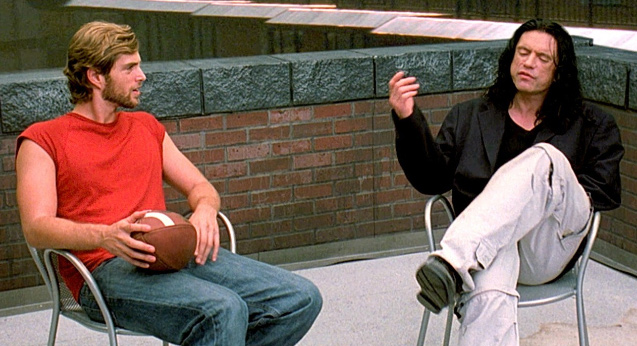
But, no, I think that they’re an experience, and I think that’s what you want to give the fans that have seen The Room. They’ve shown up. They’ve thrown spoons. They’re in shock when they see it. They’re laughing. And I think you want to do that. You want to do that in a new way, in an original way, but at the same time, give them something that has that same kind of entertainment factor. And I think with the double feature and seeing 1 and then experiencing 2, I think fans have responded really well to the movies, but I think with the cliffhanger of 1, 2 definitely pays that off. Yeah, I’m looking forward– I had a great time when I was in Auckland for Vol. 1, and the fans were so gracious, so I’m really looking forward to seeing what they think of this one.
How should people best prepare for their night out?
Vol. 1 is available now on iTunes and VOD [find on-demand listings here], so you can watch it before. And I think The Hollywood is going to also show Vol. 1 again in the theatre right before we show Vol. 2 [in a separate, earlier $10 session at 4:20pm, LOL]. So I think coming to see it with friends as a double feature, a couple of beers in your system or whatever you’d like, and I think just, yeah, come in and prepare to have your life altered in a different way [laughs].
There’s a Q&A at the screening. What’s one question that you have gotten extremely tired of answering?
You know what? I never really get tired of answering questions because I’m just so, at this point, so appreciative that people have supported these movies, but the question that does come up quite a bit is, “Are all the lines improvised?” Because Tommy just kind of says things that you wouldn’t believe, and a lot of that was scripted because at this point, I know Tommy so well and I can think like him that a lot of the dialogue is things I could think out, but there are a few really eccentric lines that Tommy throws out that are not to be missed. But, yeah, I mean, most of the lines were scripted with a few golden nuggets that Tommy threw in.
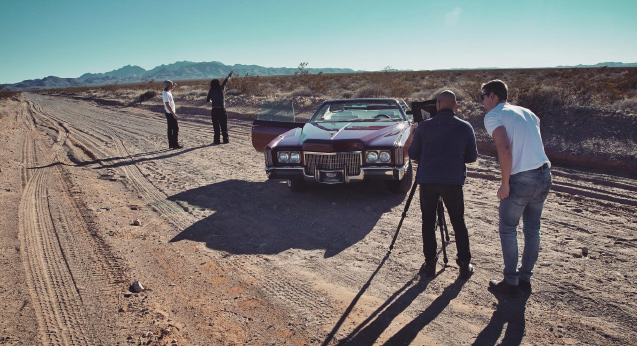
Thinking about some of his famous onset moments in the production of The Room and you experiencing things, acting beside him, or onset beside him, that no one could possibly have seen coming, how did you go about anticipating what would happen with these films, and were there still things that took you by surprise? Like, did you find yourself corpsing at certain line readings and things like that?
Tommy and I would rehearse every night before filming to kind of work out the kinks and what he would think about the dialogue that I wrote for him and throw in his own one-liners. So it was pretty prepared, but that’s the thing with Tommy; you never know what’s going to happen, and that’s kind of the beauty, is having those unpredictable scenes come about when you’re filming because you may take a moment and do something totally different. So we rehearsed a lot and tried to be as prepared as possible; at the same time, left space for the crazy moments, which I think definitely happen in both films in ways that will surprise you.
How about moments of frustration? Did things like that emerge during the production?
Very, very rarely. There were a few scenes that were harder than we thought to get. One of them was a birthday party scene, a lot like The Room. And then some of the desert stuff that we had to shoot. Part two is kind of like a western in a way. A very strange western. So we were out in the desert, and some of those scenes were difficult to get down, but, I mean, that’s just part of moviemaking. But, for the most part, it was a very fun, wild, unique shoot that I think we all look back on with fondness.
Tommy’s obviously become synonymous with his onscreen performance in The Room, and I think particularly through The Disaster Artist becoming a film. What’s it like for you personally to have that film attached to you and cast such a big shadow over your life?
It kind of really picked up about 10 years ago, when the article first came out about it having this cult following, and so I just really looked at it as like, “What does this mean? What is this going to do? And how does this define what I want to do?” And I think initially, obviously, it was to use it to do some more acting, and then I realised with the way this movie is, people love to come to interact with it, to laugh at it, and I thought really what’s special about this is the story behind the film and the friendship.
And so, when I wrote the book, my goal was to really surprise people and give them a story that was not only funny, but engaging and relatable and inspiring. And so that was kind of the first step to give myself a voice by writing The Disaster Artist. And then obviously with the film being made about it, I think it brought it more into the mainstream. It brought it more of a sense of equality to what this was as opposed to kind of this movie shown once a month that people would come laugh at. It gave it some more universal appeal.
And then I think, for me, it was just kind of getting back on track to make the movies that I want to make and do the work that I want to do. And I looked at other people that have been in things that started out that were kind of more of a goof or a joke or things that weren’t taken seriously. You look at Mark Wahlberg and his rapping career. He went on to do Boogie Nights and went on to do some really great stuff outside of all that.
I think The Room is something that is a great time and people really respond to it, and it brings them a lot of happiness, but, at the end of the day, it is what it is, and I think it’s about going out there and making stuff that people respond to that is evolved and better, and teaming up with people that do actual good work, so you can still give your fans weird, bizarre films, but in a way that is maybe taking it up a notch. And I think I’m very thankful that The Room gave me a chance to interact with people and to travel, and now it gives me a voice and gives me the possibility to go out and make better films, which is all you can really ask for.
For sure. Did you have to weigh up the pros and cons of appearing on screen with Tommy again?
I didn’t really overthink it. It’s not something I’d wanted to do for a long time, and when I got the idea, I was like, “If we’re going to do it, let’s do it right.” And I thought this was the chance for me to take him seriously. He gave me a chance in The Room when I didn’t really see much there, and now it was a chance for me to say, “Hey, let’s give Tommy a chance. Let’s shoot it seriously. Let’s let him be an actor like he’s always wanted to be.” So I didn’t think of how it was going to relate to The Room or was it going to be like The Room. I just thought, “Let’s take this story and let’s try to make the best, most entertaining film we can, and be passionate and be sincere with what we’re trying to make.” Because anytime you’re going to make something, whether it’s going to be terrible or great, you’ve got to take it seriously, and you’ve got to give it your all, and that’s what we tried to do.
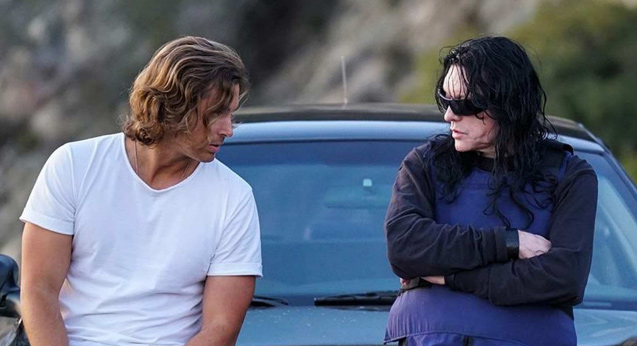
The beauty in a cult phenomenon, especially one that’s inadvertently amazing, is that the people that made it set out to make the best thing they possibly could. You can’t fake that.
Exactly. Yeah, you can’t try to be like, “Oh, in this scene, you’re going to fall down this way so it’s going to be funny.” And that never really, I think, stands the test of time. I think you get a few cheap laughs and that’s it. So we looked at a few films that we really liked the tone and style of, and we were going to go out and make an L.A. noir and treat it seriously and try to make it original.
Like any good film, Best F(r)iends thrives on conflicts, were there any moments that you drew upon where you’ve wanted to horrendously harm Tommy in real life?
No. I mean, he thought I was going to try to kill him at one point when we went on a road trip, and I thought that was really interesting and really funny at the same time. And I thought, “Let’s explore, if I really was going to try to do that, what would happen.” And Tommy always has this kind of supernatural feel to him. And I was like, “I feel like you can never get away with something like that.” And that’s what became interesting to me, is the thought of Tommy coming after you or finding a way to teach you a lesson. And I just kind of rolled with that. Within a few days, the whole thing kind of came together.
What were his first set of reactions when you talked to him about doing this project?
I was surprised. I thought he was going to want to take it over. I thought he was going to want to rewrite it. I thought there was going to be a ton of rules. And he just really was very simple. He was like, “Okay, if you have an idea, let’s try to do it.” But he had a very, very interesting request, and it was that he wanted for us to be the same height in the film, which I didn’t know exactly why, but when he ended up pulling out these platform heels so he and I were the same height, I thought, “What a brilliant idea.”
And what an entrance on screen [laughs].
Yeah. Yeah. Yeah. Absolutely. A great entrance.
Best F(r)iends: Volume 2 plays Auckland’s Hollywood Avondale on Sunday Dec 2 at 7:30pm (buy tickets here) and Wellington’s Roxy Cinema Monday Dec 3 at 6:00pm and 7:30pm (buy tickets here).
Greg Sestero will take part in a Q&A at all screenings.





